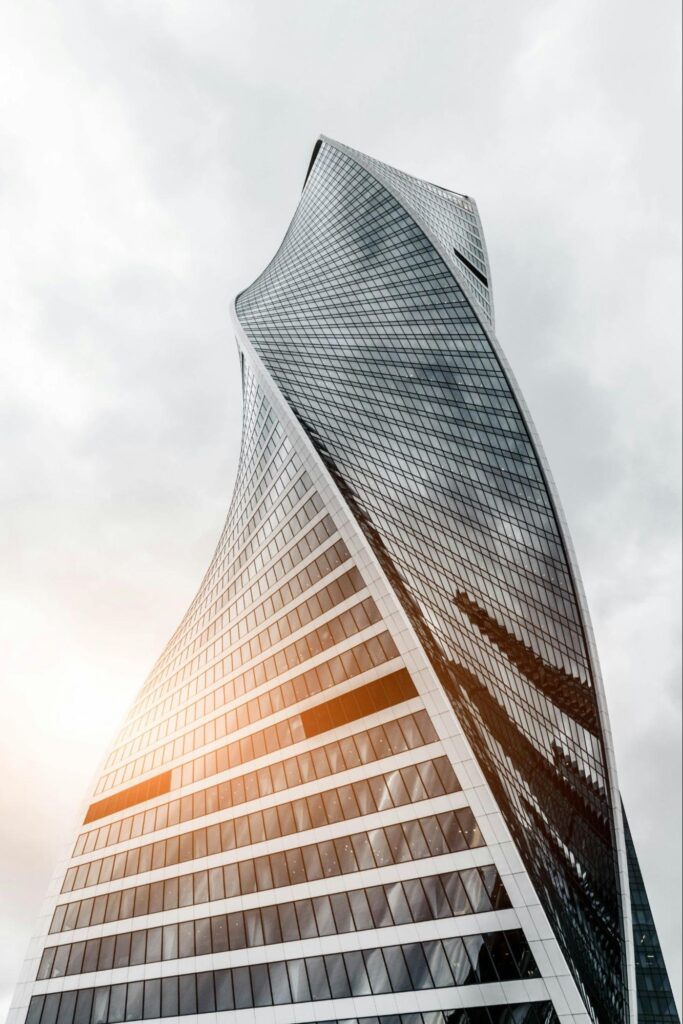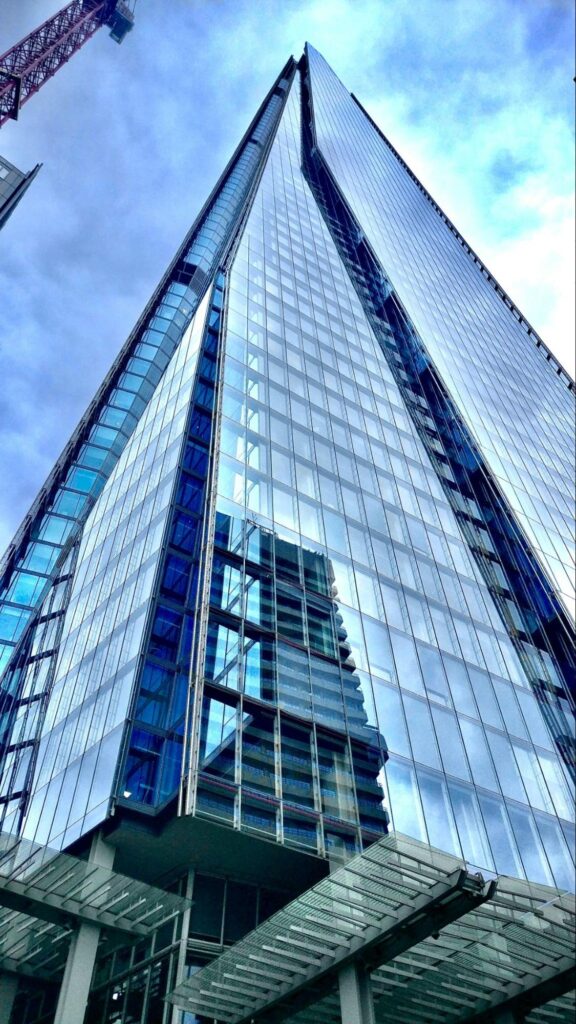Window film and tinted glass are both popular options for enhancing privacy, reducing heat and glare, and improving energy efficiency in homes and businesses. While they serve similar functions, there are key differences between these two options that can impact your decision. Understanding the basics of window film and tinted glass, the installation process, cost implications, durability and maintenance, and energy efficiency and UV protection will help you make an informed choice for your specific needs.
Understanding Window Film and Tinted Glass
The Basics of Window Film
Window film is a versatile solution for enhancing the functionality and aesthetics of your windows. This thin, adhesive material is meticulously designed to cater to various needs and preferences. Typically crafted from polyester or vinyl, window film is available in a diverse range of shades and levels of opacity to suit different requirements. Whether you seek increased privacy, UV protection, heat reduction, glare reduction, or improved energy efficiency, window film can be tailored to address your specific concerns.
Beyond its practical benefits, window film also serves as a decorative element, adding a touch of style and sophistication to your living or working space. With options ranging from frosted and patterned designs to colorful and textured finishes, window film offers a creative way to personalize your windows and enhance the overall ambiance of a room.
What is Tinted Glass?
Tinted glass presents an alternative approach to achieving similar advantages as window film. Unlike window film, tinted glass is integrated into the glass itself during the manufacturing process. Tinting agents, such as metallic oxides or dyes, are carefully blended into the glass mixture before it undergoes the melting and shaping stages. This meticulous process results in tinted glass that boasts a permanent hue, offering benefits such as enhanced privacy, UV protection, heat reduction, and glare reduction.
Furthermore, tinted glass is renowned for its durability and longevity, as the tinting process ensures that the coloration remains intact over time, unaffected by external factors. This makes tinted glass a low-maintenance solution for properties seeking lasting performance and aesthetic appeal in their windows. Additionally, tinted glass can be customized in terms of color intensity and hue, allowing for a tailored approach that aligns with your design preferences and functional requirements.
The Installation Process
Installing Window Film
Installing window film is a relatively simple process that can be done by a professional or as a DIY project. The application involves cleaning the window surface, cutting the film to size, and carefully applying it using a solution to prevent air bubbles. It is important to follow the manufacturer’s instructions for proper installation and allow the film to cure before cleaning or touching the surface. Professional installation is advised for best results.
Window film serves multiple purposes beyond just adding privacy or reducing glare. Some films are designed to block harmful UV rays, which can help protect furniture and flooring from sun damage. Additionally, certain types of window film can improve energy efficiency by reducing heat transfer through windows, ultimately lowering heating and cooling costs.
The Process of Tinting Glass
Tinting glass requires specialized equipment and expertise. It is typically done during the manufacturing process before the glass is installed in windows. The glass sheets are heated and coated with a thin layer of tinted film. The tint becomes part of the glass, making it a permanent feature that does not require any additional installation steps.
Professional glass tinting services offer a wide range of tint options, from light tints that simply add a touch of color to the glass to darker tints that provide increased privacy. In addition to aesthetic benefits, tinted glass can also help reduce glare and improve the overall comfort of a space by regulating temperature and UV exposure. Some advanced tinting technologies even offer privacy during the day while allowing for clear views outside at night.
Cost Implications
The Price of Window Film
The cost of window film can vary depending on the brand, quality, and size of the windows being treated. On average, you can expect to pay between $5 and $10 per square foot for professional installation. If you choose to install the film yourself, the cost can be significantly lower. However, it is important to consider the time and effort required for a successful DIY installation.
When considering the cost of window film, it’s essential to factor in the potential energy savings it can provide. High-quality window film can help reduce heat transfer, UV radiation, and glare, leading to lower energy bills and increased comfort. Additionally, some types of window film offer privacy and security benefits, adding value beyond just the initial cost.
Cost of Tinted Glass
Tinted glass tends to be more expensive than window film, as it is a permanent feature that requires specialized manufacturing processes. Prices can range from $10 to $20 per square foot or more, depending on factors such as the level of tint, the size of the glass panels, and any additional features or coatings. While the upfront cost may be higher, it is important to consider the long-term benefits and durability of tinted glass.
One of the advantages of tinted glass is its ability to block a significant amount of solar heat gain, reducing the need for excessive air conditioning in hot climates. This can result in substantial savings on cooling costs over time. Additionally, tinted glass can enhance the aesthetic appeal of a building, providing a sleek and modern look while also offering privacy for occupants.
Durability and Maintenance
Lifespan of Window Film
Window film is designed to be durable and long-lasting. Depending on the quality of the film and the installation process, window film can last anywhere from 5 to 15 years or longer. However, factors such as exposure to direct sunlight, extreme temperatures, and harsh cleaning chemicals can affect its lifespan. Proper care and maintenance, such as using non-abrasive cleaners and avoiding sharp objects, can help maximize its longevity.
It’s important to note that the lifespan of window film can also be influenced by the type of climate it is exposed to. For instance, window film installed in regions with high levels of UV radiation may experience a shorter lifespan compared to those in milder climates. Regular inspections of the film for any signs of wear and tear can help identify potential issues early on and extend its durability.
Durability of Tinted Glass
Tinted glass is inherently durable and resistant to fading or discoloration over time. Unlike window film, which is a separate layer applied to the glass, the tint is a permanent part of the glass itself. This means that it will not peel or bubble like film and is less susceptible to damage. Additionally, tinted glass is easy to clean and maintain, requiring only regular window cleaning practices.
Another advantage of tinted glass is its inherent energy efficiency properties. The tint helps reduce heat transfer through the windows, which can lead to lower energy costs for heating and cooling. This not only benefits the environment by reducing energy consumption but also provides cost savings for homeowners and businesses in the long run. With proper care and maintenance, tinted glass can retain its durability and energy-saving benefits for many years to come.
Energy Efficiency and UV Protection
Energy Savings with Window Film
As mentioned, window film can significantly improve the energy efficiency of your windows. It acts as a barrier against heat transfer, reducing the amount of heat that enters your space during hot summer months. This can lead to lower cooling costs and increased comfort. Additionally, window film blocks UV rays, which can fade furniture, flooring, and artwork while also posing health risks to occupants. By blocking UV rays, window film helps protect your space and its occupants from harmful sun exposure.
Moreover, window film can also enhance the privacy of your space by reducing visibility from the outside. This is particularly beneficial for spaces where privacy is a concern, such as conference rooms, bedrooms, or bathrooms. The added privacy can create a more comfortable and secure environment for occupants.
UV Protection of Tinted Glass
Similar to window film, tinted glass provides effective UV protection by blocking a significant portion of harmful UV rays. This helps preserve the interior of your space and reduce the risk of sun-related damage. However, it is important to note that not all tinted glass offers the same level of UV protection. Look for tinted glass with a high UV blockage rating to ensure maximum protection.
Furthermore, tinted glass can also reduce glare and improve the aesthetics of your space. By minimizing glare from sunlight, tinted glass creates a more comfortable environment with better visibility. This can be especially advantageous in office settings where computer screens may be affected by excessive glare; eliminating glare then leads to increased productivity and comfort for employees.
Conclusion
When deciding between window film and tinted glass, it is important to consider factors such as installation process, cost implications, durability and maintenance, and energy efficiency and UV protection. Window film offers a flexible and cost-effective solution that can be easily installed or removed, while tinted glass provides a permanent option with superior durability and UV protection. Ultimately, the choice depends on your specific needs and preferences. Assessing these factors will help you make an informed decision that enhances the comfort and aesthetics of your space.


